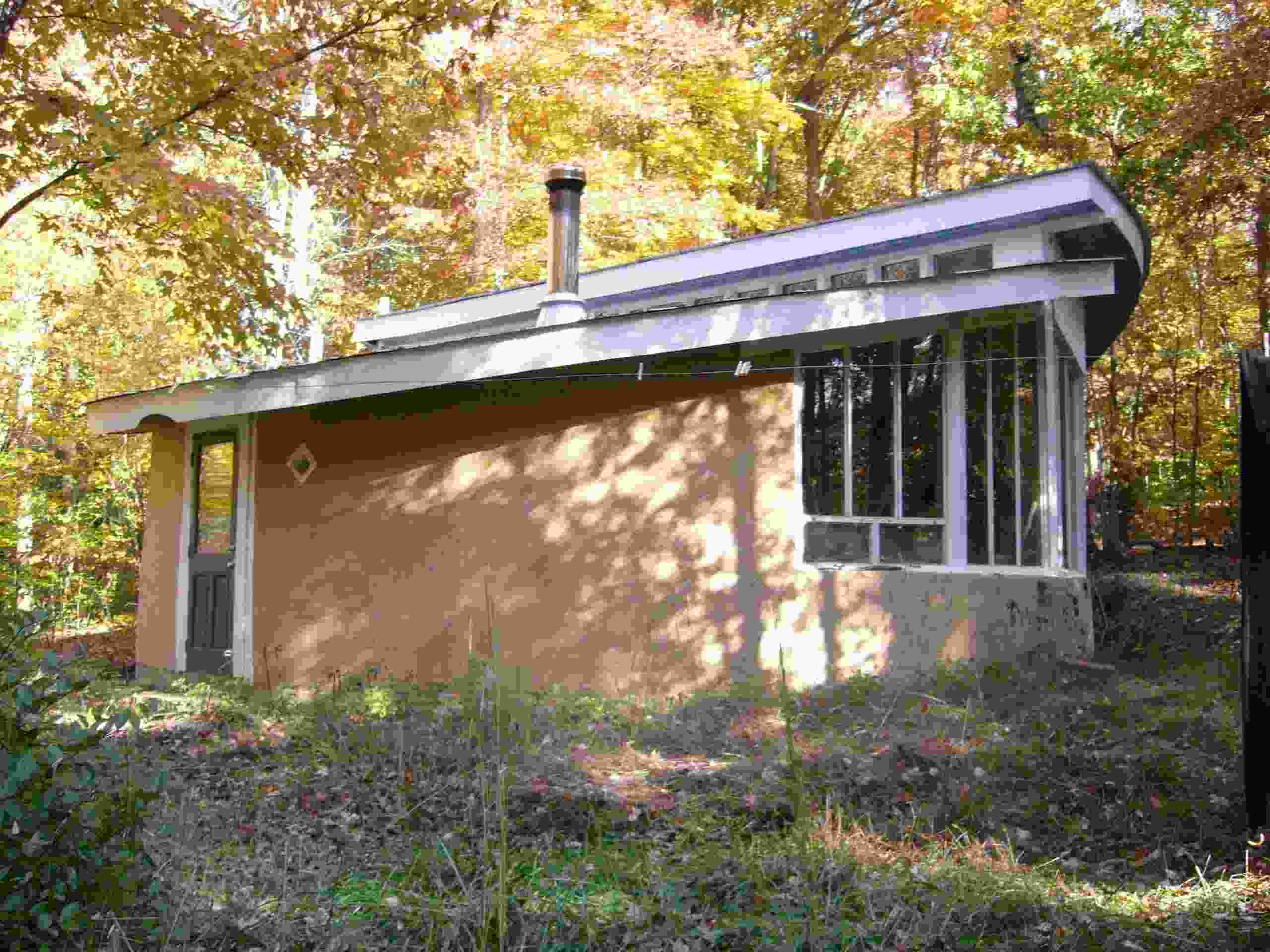Back in the last millennium, we had a hankering to get our fingernails dirty and tell the Man to shove it, so we took a small inheritance and purchased some acreage out in the woods with the idea of living a modicum of an independent life.
Much of our initial impetus towards renewable energy came from out desire for autonomy, and as the US economy shows daily with its importation of nearly half a billion gallons of oil to keep the consumerist dream humming, there's nothing independent about using fossil fuels for anything.

Ten acres is a common threshold for what many of us think of as "a decent chunk of land." When we set out looking for our patch of earth to build and sustain our lives in early 1996, we were convinced that we'd need at least this amount just for gardening. At our new city digs, we can barely keep up with our 4,000 ft2 (or 1/10th of an acre) garden, so that mythical ten acres we did eventually buy stayed mostly wooded. We also thought that we should be "in the woods" so that we would be close to nature, not realizing that most of that "nature" scrambled for the exits as soon as we brought in the front loader to clear the driveway and put in the septic system, and that a passive solar home and vegetable garden don't work so well in the shade.
Lesson learned, but we now are the owners of a very unique round cob home, built pain-stakingly by hand, that is 45 minutes from town. Now that our idealistic notions of independence have becoming increasing intertwined with both our understanding of the need for community and the miserableness of trying to provide every last thing for yourself, what to do with a sustainable home in a not-so-sustainable location?
This gets down to the nitty-gritty of it: how are we going to transition to a built environment that can be powered by the more limited power supply of renewable energy? The easy answer, of course, is to look at what the built environment looked like before the widespread use of fossil fuels. This was an urban core surrounded by rural communities. The relationship was particularly beneficial and sustainable over the long term. Food, fiber, and fuel were produced in rural areas, and urban areas offered specialized services that lower densities couldn't support, such as a variety of stores, health care, and entertainment. The more sustainable cities, such as Beijing (which had a population of roughly 400,000 in the year 1200 C.E.) had the good sense to recycle their waste back out to the rural areas to ensure longevity of the soils, as F.H. King documented so well in Farmers of Forty Centuries.
Us Americans are a good bunch for studying a subject to death before we finally do anything about it. We know that walking greatly reduces mortality, that public transportation uses a fraction of the energy of cars, and that urban dwelling emits about 1/2 the amount of greenhouse gases as suburban living. Yet most talk about "green building" fails not only to consider the embedded energy in our already built environment, but also neglects to emphasize an urban environment that poses our only hope of reducing our dependence on dwindling and planet-choking oil. If you want to know if a home is green or not, just ask the question, "Where can I walk to?".
Stephen and Rebekah Hren are the authors of The Carbon-Free Home: 36 Remodeling Projects to Help Kick the Fossil-Fuel Habit from Chelsea Green. For more information about green living, the Hrens, or their book, visit thecarbonfreehome.com.